During Gallery Weekend Berlin, 51 galleries opened up their doors to 66 new exhibitions within just a couple of days. Here’s a run through a few of our favourites ones, that we remember with warmth.
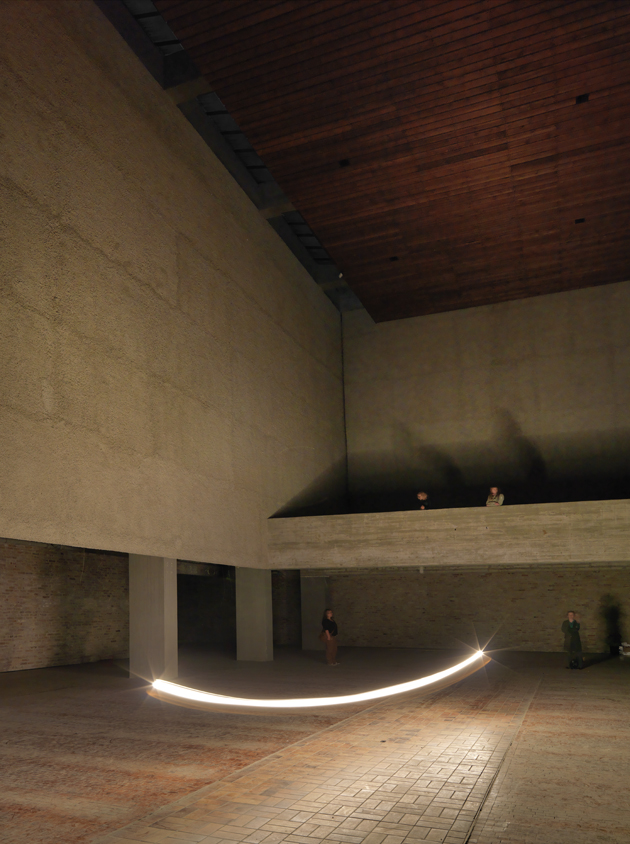
Alicja Kwade at Johann König
The brutalist former church building of ST. AGNES will re-open this autumn as an arts and culture center with the gallery Johann König as a natural landmark. But already as of Gallery Weekend Berlin, besides the solo show with Monica Bonvincini in their main space, Johann König is showing the Berlin-based artist Alicja Kwade’s light and sound installation Nach Osten (2011), translated “To the East”. Kwade transforms the monumental, archaic church hall via an extensive, electrical version of Focault’s pendulum, using a light bulb instead of a weight to visualize that the earth spins. Among other of the artist’s obsessions, Kwade is fascinated by scientific problems and visual experiments, killing two birds with one stone in her vast and hypnotizing installation. Although, in Kwade’s own words; “the earth doesn’t care, it just turns”. A must see, every weekend until May 26th.
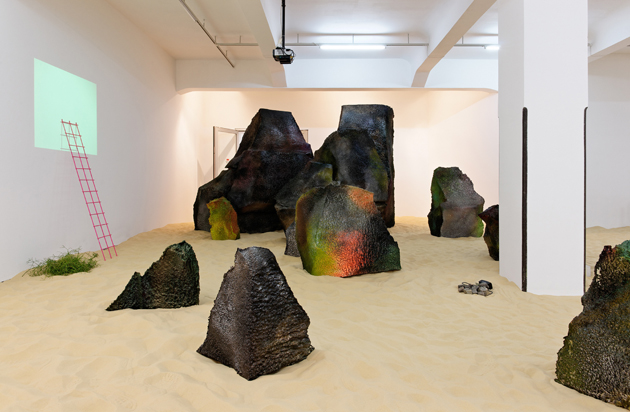
Jerszy Seymour at Galerie Crone
Entering Jerszy Seymour’s installation on the first floor of Galerie Crone feels like taking the elevator to the 7½th floor in the movie Being John Malkovich. His solo show The Universe Wants To Play is a hallucinogenic travel into the brain of the artist and orginally industrial designer Seymour. In the main installation Brain Cave Spaceship, a glittering sandy beach stretches through the gallery, where stones and rocks, bones and animal skulls, painted bricks and branches have been scattered around. Even a live frog is hiding between the plants growing in his Memory Tanks. Seymour has drawn on geometric shapes, like pieces of a puzzle in his brain laboratory, and created a playground where the audience is invited to romp about, with or without shoes, in an anarchic homage to the mind. Do it.
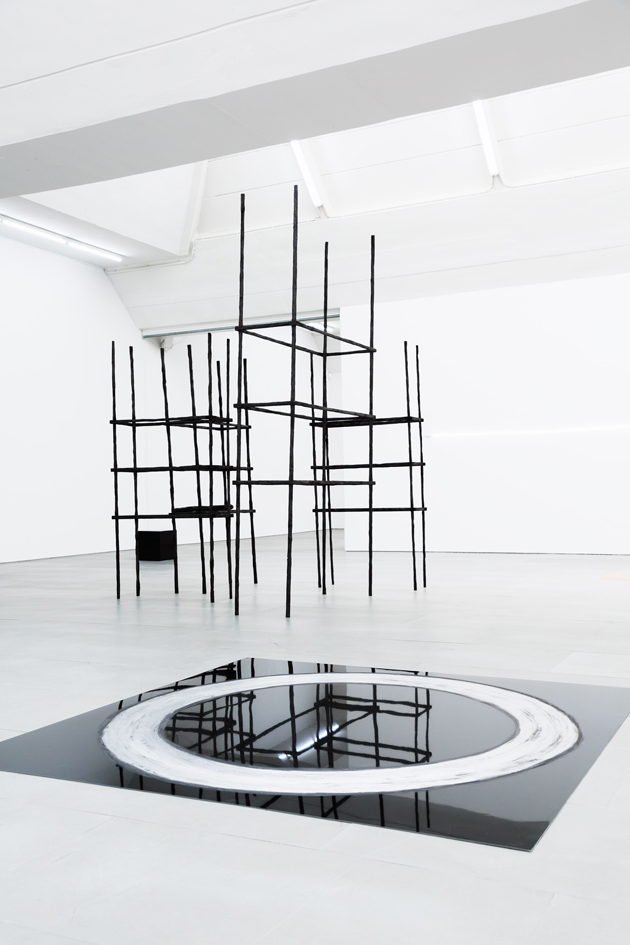
Michel François at carlier | gebauer
For his solo exhibition Pieces of Evidence at carlier | gebauer, the Belgian artist Michel François started off with the photos he took in the basement of Palace of Justice in Brussels, of wrapped, numbered and labeled objects in an evidence room. Interested in the trivial, in the harmless meaning these objects and evidences of crime gets when outside of the court, François’ work can be read as a similar trace of what happens inside and outside the studio. In the gallery, an ice block melts in front of your eyes, a cube of sand has been pushed along the floor, a giant structure of burnt wood is still smelling of ash; all of his works are leaving traces perceptible by touch or smell, in a beautiful and forceful exhibiton.
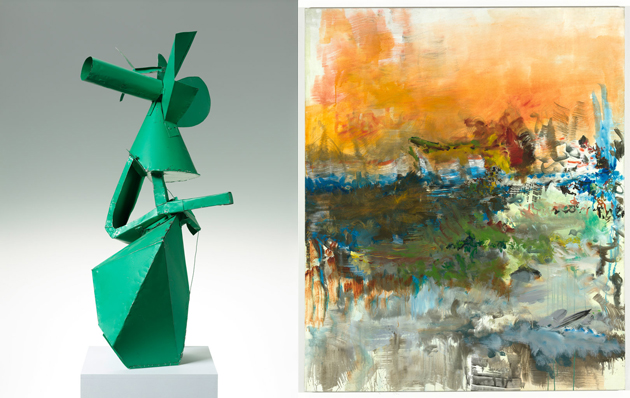
Markus Bacher and Thomas Kiesewetter at CFA
On the second floor of CFA, Contemporary Fine Arts, Thomas Kiesewetter’s series of free-standing and wall sculptures in bright monochromatic colours resemble a playground of sculptural snapshots. Meanwhile on ground floor, Markus Bacher’s solo exhibition After Eight unfolds as an abstract landscape of mountains, lakes and dark forests. Bacher’s new works are made of superimposed juxtapositions and broad horizontal brush strokes in shades ranging from earthy chestnut and brick via strokes of bright yellow to intense sky-blue or cloudy white. Bringing his heimat of the Alps into his works, the young Austrian artist, based between Vienna and Cologne, is definitely someone to look out for.
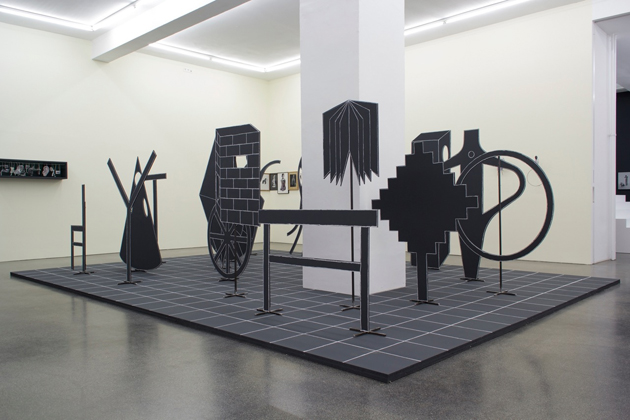
Eva Kotátková at Meyer Riegger
Meyer Riegger’s irresistible They Are Coming by the young Czech shooting star Eva Kotátková revolves around configuration of the human body and our perception of it. Through drawing, photography, collage, objects, installation and even live performance, fragmented body parts occur and disappear, and movements and formulations of the body are marked or suggested by lines as a demarcation between figure and space. In a large installation, objects set up on a chessboard-like area, as props for an action that is yet to come. In a related video piece, made with the classic “black theatre” technique where the performers cover their body with black cloth, so that only parts of their bodies are visible, Kotátková shows precisely those shapes, interacting with the human beings. It is a refreshingly physical yet extremely visual show, on that perhaps basic but oh so important theme of what actually makes us human.

